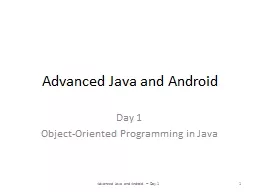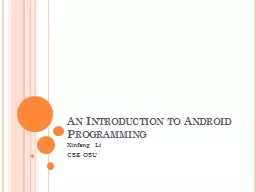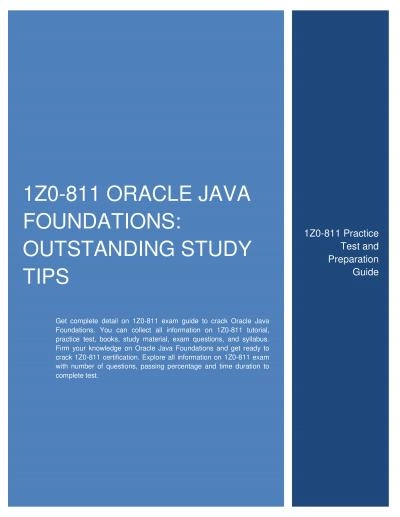PPT-Advanced Java and Android
Author : debby-jeon | Published Date : 2016-03-08
Day 1 ObjectOriented Programming in Java Advanced Java and Android Day 1 1 OO Programming Concepts Objectoriented programming OOP involves programming using objects
Presentation Embed Code
Download Presentation
Download Presentation The PPT/PDF document "Advanced Java and Android" is the property of its rightful owner. Permission is granted to download and print the materials on this website for personal, non-commercial use only, and to display it on your personal computer provided you do not modify the materials and that you retain all copyright notices contained in the materials. By downloading content from our website, you accept the terms of this agreement.
Advanced Java and Android: Transcript
Download Rules Of Document
"Advanced Java and Android"The content belongs to its owner. You may download and print it for personal use, without modification, and keep all copyright notices. By downloading, you agree to these terms.
Related Documents








![[DOWLOAD]-Android Studio Arctic Fox Essentials - Java Edition Developing Android Apps](https://thumbs.docslides.com/970752/dowload-android-studio-arctic-fox-essentials-java-edition-developing-android-apps-using-android-studio-2020-31-and-java.jpg)
![[READING BOOK]-Android Studio Chipmunk Essentials - Java Edition: Developing Android Apps](https://thumbs.docslides.com/972614/reading-book-android-studio-chipmunk-essentials-java-edition-developing-android-apps-using-android-studio-2021-2-1-and-java.jpg)
![[eBOOK]-java programming book.effective java coding problems for beginners and dummies](https://thumbs.docslides.com/973026/ebook-java-programming-book-effective-java-coding-problems-for-beginners-and-dummies-8th-edition-2021-2022-java-book-programming-java-for-beginners-java-a-beginner-s-guide.jpg)
![[READ]-Android Studio Arctic Fox Essentials - Java Edition: Developing Android Apps Using](https://thumbs.docslides.com/973940/read-android-studio-arctic-fox-essentials-java-edition-developing-android-apps-using-android-studio-2020-31-and-java.jpg)


